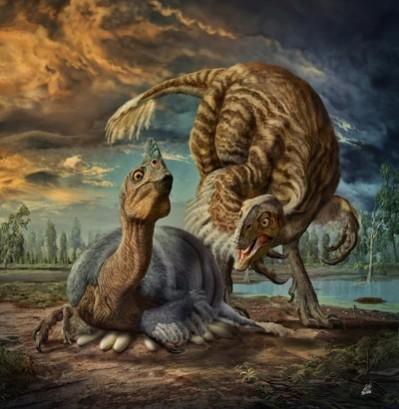Ever since the first Jurassic Park film came out over 25 years ago, fascination for the DNA of dinosaurs and research into resurrecting the extinct species has caught the attention of both the public as well as the scientific community. However, is it possible? Can extinct creatures be brought back to life using DNA collected from various sources?
While resurrecting an extinct species of prehistoric creatures might not be first on the list of priorities for scientists right now, there are, however, certain benefits to resurrecting other dead creatures. There is ongoing research on bringing back the Woolly Mammoth to ease with environmental and ecological stress that certain regions in Northern Europe are facing.
Having said that, will it still be theoretically possible to bring back dinosaurs with just the right DNA? A report published by researchers from the University of Kent, in the journal Conversation, explained how this can be done, if it can be done, and what will go into the building of a live dinosaur.
"Does this bring us closer to a real Jurassic Park?" The answer, write the authors, is an emphatic "no".
The way it is portrayed in the movie - mosquitoes that lived in the age of the dinosaurs have blood samples in them and that is isolated and DNA extracted from it. That is just not possible, say the researchers, simply because blood from mosquitoes in that time, while they do have blood and DNA, it is too old and have degraded.
Though, DNA of the woolly mammoth (believed to have disappeared about 10,000 years ago) and that of Neanderthals (early humans) have been successfully isolated, notes the report.
The oldest DNA ever found so far is about a million years old, but dinosaurs roamed the Earth about 65 million years ago.
In case this highly unlikely scenario is played out and scientists actually manage to locate the DNA, it would be chopped up and jumbled in with the DNA of thousands of other hosts. It would not be easy trying to put them back together.
The authors liken it to attempting to solve the world's largest, most complicated jigsaw puzzle without any idea of what the finished picture looks like and no clue if there are any pieces missing.
In the movie, though, scientists simply fill in the missing links with frog DNA. If that is done, the end product, even if successful, will not be a dinosaur, but a mix of both animals. The closest animals to dinosaurs now on the Earth are birds, and using bird DNA will be a better option, say the researchers.
Another issue with how some people think DNA works is also nothing more than science fiction say the researchers. One strand of DNA cannot recreate an entire creature, in fact, "DNA is a starting point but the development of the animal inside the egg is an intricate "dance" of genes switching on and off at the right time with a series of environmental cues." they write.

To recreate a perfect dinosaur, a perfect dinosaur egg is needed wherein lies all the complex chemistry that goes into the formation of an animal. In the film, the dino DNA is patched up with frog DNA and injected into an ostrich egg. In reality, this is simply impossible.
It is not possible for a perfect strand of chicken DNA to be introduced to an ostrich egg and expect a chicken to grow out of it. Actual experiments to try out have failed, pointed out the researchers. The same goes for velociraptors as well.
Having said that, the paper points out that dinosaurs actually never really went completely extinct. Birds are dinosaurs. They did not evolve from dinosaurs, they are not even closely related to them, notes the paper.
"Dinosaurs (including birds) are the survivors of at least four extinction events, emerging each time in more diverse, weird and wonderful forms. One key element of our paper is that we theorise that their ability to do this is facilitated by their genome structure," write the researchers.

















